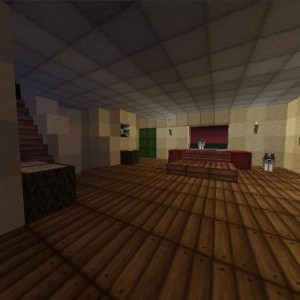Raley’s “what’s the point?” is misplaced conclusion to her discussion of swarming and other denial-of-service attacks (and a little lazy.) This is not the material question. Unfortunately, I think (perhaps in an effort to feign neutrality at the end and in her discussion of the meaning of “hactivism”), she fails to more clearly connect the dots between how material-but-ultimately-symbolic structures of border control: fences, web cams, signs, etc. that require equally material-but-ultimately-symbolic exclusionary modes of resistance (36).
Just like the aim of increasing strict immigration legislation and border security is the exclusion of certain bodies from participation in the United States (further reinforced when those some of same bodies do make it stateside, but do so illegally, and are still excluded because of their status as non-citizens–Agamben’s homo sacer[38]), the tactics of political resistance must also exclude. The Cult of the Sacred Cow may take issue with the application of the term “hacktivism” to these efforts, but their aim as activists is different from EDT or the EZLN (41). Hactivism that seeks to maintain an open Internet can’t rely on cutting off the free-flow of information. The physical expulsion (itself a “denial of service”) of migrant people from the U.S. requires a like response. This isn’t about opening, it’s about exposing the mistreatment and marginalization of migrant and indigenous people for whom the “free-flow of capital” does not exist. They are exploited non-entities within the system governing U.S./Mexican trade relations. This kind of activism cannot deny capital. It cannot reverse that power structure so instead it temporarily limits the free-flow of information. These are as much symbolic/media events in response to the “systemic logic” (43) of denial as they are literal disturbances against individual entities that perpetuate that denial. Maybe it isn’t Sacred Cow’s idealized protest, but it’s still in-keeping with the larger disruptive logic of protest.
With this in mind, Dominguez’s admission that there is no endgame (46) shouldn’t be read (without a better context in which to frame it) as an inability on the part of activists to look beyond “the next five minutes” or or a failure on the part of media tacticians to coalesce around a singular identity. There is no singular identity. This is what protest looks like when it is in resistance to similar unending assault It’s an acknowledgement that on this particular front the notion of an “end” does not exist because undeclared wars do not have declared ceasefires. Moreover, it’s not a matter of just doEAT-ing it and her cutesy imperative directs (46). Dominguez’s understanding that to notions of utopia cannot be anymore clearly fixed seems to be a nuanced understanding of the nature of resistance: as the systems and logic of oppression shift, so too must the resistance to that oppression and what it means to escape it.

